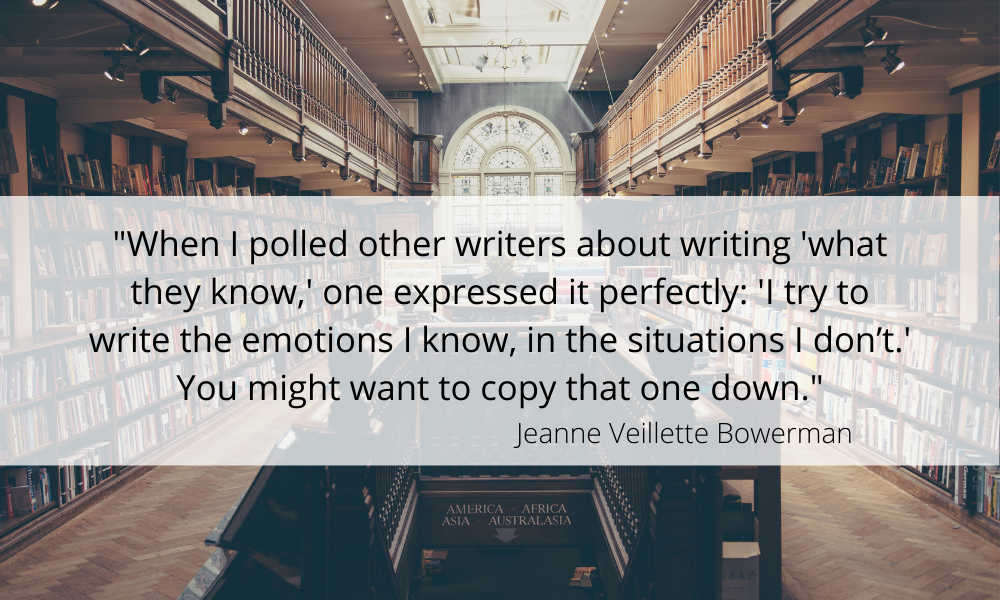Writing a Screenplay: Using Structure to Develop Your Ideas
The following is a guest blog post by Fred Perry. Fred won first place in the screenplay category in the 82nd Annual Writer’s Digest Writing Competition. He has also received…
The following is a guest blog post by Fred Perry. Fred won first place in the screenplay category in the 82nd Annual Writer's Digest Writing Competition. He has also received script requests, optioned three features, and won eight screenplay competitions. Today, he'll tell you how to start a screenplay and share his story of struggling to break into screenwriting.
* * * * *
I don't think I could ever write a novel—a skill requiring patience far beyond my desire or comprehension. I am into the immediacy of present tense, truncated descriptions, and externalized visuals. I am a screenwriter.
A while back, a literary manager in L.A. asked me how I would know when I had succeeded as a screenwriter. My answer was simple, and it's the one thing all novice screenwriters want to hear, "Who's your agent?" And if a screenwriter is fortunate enough to get paid for even one spec script, see his or her writing credits on screen, or win a screenwriting competition or two, the odds are that writer has talent.
While successful screenwriters approach their craft in a multitude of different ways, there is one element that must be established before FADE IN ever appears on the page: Solid story structure.
Whether you're writing a romantic comedy, science fiction, horror, action adventure, fantasy, or a family film, if the structure of the script is not firmly locked in, nothing good will come of it—generally speaking, that is. There are those few fortunate writers who just jump in, start writing, and get lucky. I used to be one of them.
While parking cars at Universal Studios in Hollywood a few years ago, I would regularly sneak onto the lot and scrounge through the dumpsters behind the producers' offices for discarded television scripts. This was how I learned to write the basic screenplay format.
With a fierce desire to write my way out of that parking lot, but knowing absolutely nothing about story, structure, or genre, I wrote my first spec feature. One of the studio executives in the MCA Tower had seen me over the past few weeks, sitting on the low parking lot wall, working on the script with my portable typewriter. On the day I completed the script, he asked to see it. Incredibly, the next morning he offered me an option—right there in the parking lot. I quit parking cars the next day. I thought I was on my way; I had it made.
That illusion was quickly shattered. While the option did lead to a few writing gigs and film credits on some minor exploitation films in Europe, India, and Latin America, my own script was never produced. Neither were my next four. Something was obviously wrong. As I learned from a no-holds-barred reader at Paramount, my scripts were sprawling, amorphous medocrities, with no structure, focus, or character development.
Ouch.
I eventually managed to put my ego aside and started reading every book I could find on screenwriting, from Syd Field and William Goldman, to Aristotle and his three-act paradigm. I studied hard and kept writing.
Unlike completed novels, screenplays are not the end of the creative process, but the beginning. They are not designed for reading; they are designed as narrative blueprints for films. And with most feature films rarely running over two-and-a-half hours in length, screenplays must adhere to strict structural rules if they are to be considered viable as films.
The genesis of my scripts are always the same. A story idea will pop into my mind. It could be a line from some long-forgotten conversation, an event I witnessed that made a lasting impression, or a flash of a scene in my mind's eye. While most of these ideas are ephemeral, there are others that stubbornly occupy my thoughts, like squatters refusing to vacate. When this happens, I know the time has come to begin the writing process.
But before writing the first word, I will spend days, sometimes weeks, just thinking, visualizing the primary characters, their appearances, determining their goals, and how they will advance the story or create conflict. I envision their interactions with each other, hearing how they speak. I repeat this process, mentally editing and re-thinking until I am certain the story has a solid framework. Then I establish and lock in the ends of the first two acts of the script. Why? Without getting bogged down in screenplay jargon, the ends of acts one and two are the most important turning points in any feature script.
Watch just about any movie and you will notice, at some point between 20 and 30 minutes into the film, after the environment and atmosphere have been established, main characters introduced, and potential conflicts and sub-plots foreshadowed, some event or action occurs that spins the story into a new direction. This is where act one ends and act two, the main body of the story, begins.
Similarly, towards the end of the second act, normally between pages 80 and 90, something I call "the page 80 crash" happens. In a romantic comedy, for example, this is where the boy, who has just won the girl's heart, inevitably loses her before winning her back by the end of act three. In a horror film, it's when the last evil entity has seemingly been exorcised for good, until the true horror appears, commencing a final battle between good and evil.
Regardless of the specific genre of a script, these beats, or similar variations, are almost universally inherent in the structure of good screenplays. At least as far as American scripts are concerned—but that's another story.
I normally have one more task to complete before I start writing the actual script. I reduce the story to its essence, a short log covering the first two acts. For example, "Tortured by night terrors, a war vet undergoes radical, top secret PTSD experiments that go horribly wrong." A simple sentence, yet it identifies the main character, his problem, how he intends to resolve it, and the unexpected obstacle that will confront him near the end of act two. Act three is where he will surmount this obstacle or fail.
This is a map, a way to stay on track and focused as the story unfolds. From now until the first draft is finished, I write a minimum of five pages each day, regardless of how many hours it takes me to meet that goal. Only with this map am I ready to write.
* * * * *
This kind of advice doesn't have to be solely applied to screenwriting. Envisioning characters and their traits, conflicts, and world are the kind of things that make up a good outline for any novelist or writer, too. And our best stories can spawn from the seemingly simple things, as Fred suggested. Sticking to those ideas and visions as the beginnings of an outline are the key to writing—no matter what the genre.
Cris Freese is a technical writer, professional book editor, literary intern, and the former managing editor of Writer's Digest Books. Cris also edited the annual guides Children's Writer's & Illustrator's Market and Guide to Literary Agents, while also curating, editing, and writing all content for GLA's online companion. crisfreese.com








